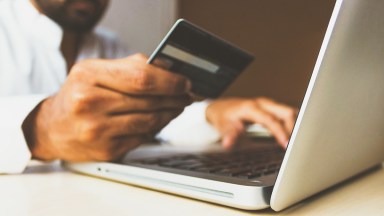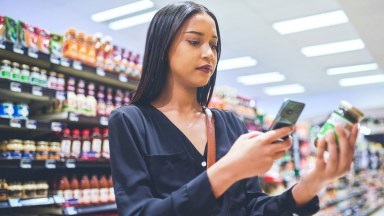From the latest nail polish trends to the hippest hair products or the toughest wrinkle fighters, women and men, young and old are shopping in the beauty aisle. In fact, 94% of all U.S. households buy beauty products, spending an average of $98 each year.
And these dollars add up: Sales across the industry totaled $33.3 billion last year. But they’re not growing. Despite most U.S. households buying products from this category, total sales are mostly flat compared to a year ago. Mass merchandise outlets, which accounted for almost two-thirds ($22.1 billion) of total beauty sales last year, grew just 0.4% from the year before.
On the bright side, beauty sales are growing in some channels: Beauty dollars are increasing in value channels such as grocery, dollar, warehouse/club, salons and online. In the “prestige” channel (which represents some department stores and self-standing beauty stores), dollar sales were up 3.4% versus a year ago. However, prestige accounts for only $11.2 billion in sales.
Beauty is fragmenting. In addition to the growing number of outlets for consumers to spend their beauty dollars, there’s also a huge variety of products and people of all ages with different beauty needs. Getting the right message to the right customer is a crucial step to improve sales—but it’s one that marketers in the industry aren’t getting right.
Missing the (Beauty) Mark
Beauty manufacturers spent $2.2 billion on advertising last year, down slightly from the year before. And many beauty ads are getting lost in the clutter—they’re 20% less memorable than all other consumer packaged goods advertising for women aged 18 and older.
In addition, marketers allocated most of their ad spend to TV (42%) and print (54%). At the same time, online ad spend (defined as banner ads) dropped a significant 73%, even though consumers are increasingly turning to this channel.
Average shopper trips for beauty products fell by 2% across the industry last year. But while much larger declines in shopper trips occurred across top beauty retail channels, including drug (-16.1%), department (-6.2%) and mass merchandise (-2.2%), online “trips” online increased 15.4% last year.
Beauty’s shift toward online may be driven in part by Millennials. This generation is tech savvy—85% own a smartphone, which makes it easy for them to buy goods online. These younger consumers also care strongly about self-expression. From makeup to fragrance to skincare, beauty’s many categories provide numerous ways for young shoppers to express their individuality.
But while Millennial households spent $461 million on beauty products in the 12-month period ending June 2014, this powerhouse age group’s purchasing power is even stronger in combined households. Millennial and Generation X families have the greatest potential for beauty sales: These multigenerational households spent $798 million in the same 12-month period. Meanwhile, Millennial and Baby Boomer combined households spent an additional $699 million.
One-Size Doesn’t Fit All
Given the big dollars all generations are spending on beauty, getting ads right is essential to growing future sales. However, many beauty ads tend to look similar across brands, ultimately failing to deliver a distinctive story to truly engage consumers and drive business outcomes. Marketers need to tailor their advertising to different segments.
Women of varying ages not only have different skin care needs; they also have vastly different mindsets when it comes to how they percieve themselves. For example, women aged 18-39 and 40-54 tend to think of themselves as still young, desiring products that preserve the looks they currently possess and that mention “youth” explicitly. On the other hand, women older than 55 look for skin care products that unabashedly address the wrinkles, dullness and sagging that come with age.
Even within generations, consumers are attracted to different features within ads. When it comes to beauty, Millennial women want functionality and want to see it. But what helps this message resonate differs. For example, younger Millennial women (aged 18-25) are drawn more to beauty product demonstration visuals than older Millennial women (aged 26-34), though they are important for both.
Successful beauty ads for younger Millennial women incorporate story lines. Top stories aren’t necessarily comedic and often occur in home or familiar location. Product demos are typically incorporated into visuals and voiceovers emphasize multiple benefits and the product’s efficiency.
With older Millennial women, top ads include a mixed set of story lines or glam shot-based commercials. These ads also have limited product information or demonstrations, and voiceovers highlight product benefits and the resulting lifestyle change.
But women aren’t beauty’s only consumers. Men are making an influential presence in the market. In the 12-month period ending June 2014, male shoppers increased their spend on beauty products by 10%. And similar to women, ads for men appeal differently to the ages.
Millennial men are more visual and have higher response rates to flashy, animated beauty ads than older generations. But within this generation, story-lined ads speaking to benefits resulting in lifestyle changes resonated more with older Millennial men (aged 26-34) versus younger Millennial men (aged 18-25).
Older Millennial males actually have a similar recall profile to Baby Boomer males—both have stronger recall and like a mix of the storyline commercials and the animation commercials. They also don’t care for the female product commercials as much as younger Millennial and Gen X males. Comparatively, younger Millennial men like animations and active visuals. They also respond to a single highlight within an ad, while Gen X men respond to a story.
Marketers would do well to heed this beauty advertising effectiveness information so that their messages more closely align with their intended consumers.
Methodology
The insights in this article were derived from Nielsen TV Brand Effect over the 12-month period ending June 2014, as well as Nielsen Online Brand Effect. Nielsen TV Brand Effect measures the impact of commercials by surveying viewers the day after they were exposed to the ad on TV in their natural viewing environment, providing a comprehensive understanding of commercials’ ability to break through to viewers, and communicate the brand and key message. It is a syndicated data service that provides measurement of all ads airing during primetime on in-coverage networks.
Nielsen Online Brand Effect has measured 300-plus campaigns since 2010; however, the majority of them fall between 2012 and 2014. Brand lift is the percentage increase in the primary marketing objective of a brand advertising campaign. Brand lift is most often used by brand marketers to measure the extent to which their advertising has shifted consumer perception against one of the key purchase funnel metrics. Underlying data for What Works Where comprises Online Brand Effect campaigns that fall into the CPG-Beauty OBE category. Brand lift was collected at the site level for each campaign and categorized into site types following the Netview site map hierarchy. Then, lift was averaged and ranked.



